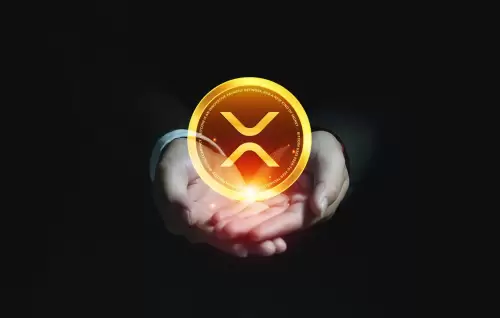 |
|
 |
|
 |
|
 |
|
 |
|
 |
|
 |
|
 |
|
 |
|
 |
|
 |
|
 |
|
 |
|
 |
|
 |
|
向权益证明的转变引发了人们对过度中心化的担忧。通过重申其对去中心化的承诺,区块链可以实现其目标

The United States Securities and Exchange Commission dropped charges against the Ethereum blockchain in June 2023, a pivotal moment in the platform’s journey toward greater maturity and acceptance in the financial world.
美国证券交易委员会于 2023 年 6 月撤销了对以太坊区块链的指控,这是该平台走向更加成熟和被金融界接受的关键时刻。
For those who didn’t follow the case, the SEC believed ether (ETH) was sold as an unregistered stock, with concerns that it was being sold without following certain rules and protocols. However, Ethereum’s proponents argued that, since the network is decentralized, it does not meet the criteria of an investment contract or security.
对于那些不关注此案的人来说,美国证券交易委员会认为以太坊 (ETH) 是作为未注册股票出售的,并担心它的出售没有遵循某些规则和协议。然而,以太坊的支持者认为,由于该网络是去中心化的,因此它不符合投资合约或证券的标准。
While the SEC may have decided against direct legal action, it did open the door for further discussions around centralization. Some technological aspects of Ethereum’s architecture have stimulated an important dialogue around contracting power among influential entities. While these discourses are mainly internal, addressing these concerns can enhance the network’s upgrade goals and support true decentralization.
尽管美国证券交易委员会可能已决定不采取直接法律行动,但它确实为围绕中心化进行进一步讨论打开了大门。以太坊架构的某些技术方面激发了有影响力的实体之间围绕契约权力的重要对话。虽然这些讨论主要是内部的,但解决这些问题可以增强网络的升级目标并支持真正的去中心化。
This is especially true as the network tries to embody the ideals of “Ethereum 2.0,” the stronger, more accessible, and more practical version of its token and infrastructure. Some say it’s already here, while others point out gaps that still need to be filled to definitively claim its arrival.
当该网络试图体现“以太坊 2.0”的理想时尤其如此,这是其代币和基础设施的更强大、更容易访问、更实用的版本。一些人说它已经到来,而另一些人则指出仍需要填补空白才能明确宣布它的到来。
Yes, Ethereum 2.0 holds significant potential for transforming DeFi and the broader ecosystem, but we can’t just have a foot halfway through the door. To reach its full potential, key developments still have to be reached.
是的,以太坊 2.0 拥有改变 DeFi 和更广泛生态系统的巨大潜力,但我们不能半途而废。为了充分发挥其潜力,仍需取得关键进展。
Validator centralization
验证者中心化
By transitioning to a proof-of-stake (PoS) mechanism in September 2022, Ethereum now allows validators to stake ETH, with large stakes increasing validation chances and rewards. This upgrade clearly underscores Ethereum’s key role in DeFi by sparking countless innovative financial tools being created on the network for lending and trading, among other use cases.
通过在 2022 年 9 月过渡到权益证明 (PoS) 机制,以太坊现在允许验证者质押 ETH,大量质押会增加验证机会和奖励。此次升级明确强调了以太坊在 DeFi 中的关键作用,激发了网络上创建的无数创新金融工具,用于借贷和交易等用例。
However, emphasizing token ownership over the number of validators could potentially concentrate power among smaller groups, going against crypto’s ethos of decentralization. Moreover, staking requires an input of 32 ETH, meaning that validators with significant ETH staked can wield disproportionate influence over network governance and decision-making processes. This creates a feedback loop that favors certain participants, and can lead to power and wealth accumulating in the hands of a few individuals.
然而,强调代币所有权而不是验证者的数量可能会将权力集中在较小的群体中,这违背了加密货币的去中心化精神。此外,质押需要输入 32 ETH,这意味着质押大量 ETH 的验证者可以对网络治理和决策过程产生不成比例的影响。这就形成了一个有利于某些参与者的反馈循环,并可能导致权力和财富积累在少数人手中。
In March, Vitalik Buterin even expressed his concerns about “lazy stakers,” or those who engage solely in staking pools rather than solo staking — clearly indicating the relevance of the centralization issue.
今年 3 月,Vitalik Buterin 甚至表达了他对“懒惰的质押者”的担忧,即那些只参与质押池而不是单独质押的人——清楚地表明了中心化问题的相关性。
At its core, Ethereum represents a shift in the way financial services are designed, accessed, and utilized. However, relying on a few entities continues to introduce risks and questions about how decentralized Ethereum 2.0 really is.
从本质上讲,以太坊代表了金融服务设计、访问和使用方式的转变。然而,依赖少数实体继续带来风险和关于以太坊 2.0 的去中心化程度的问题。
Shifting gears to DeFi
转向 DeFi
Ethereum’s path towards centralization sets the stage for more severe complications down the line — namely with regulators and reduced network resilience. Ultimately, Ethereum’s future within DeFi and the blockchain ecosystem as a whole hinges on balancing technical advancements while limiting centralization wherever possible. And there are ways to make it achievable.
以太坊走向中心化的道路为未来更严重的并发症奠定了基础——即监管机构和网络弹性的降低。最终,以太坊在 DeFi 和整个区块链生态系统中的未来取决于平衡技术进步,同时尽可能限制中心化。并且有一些方法可以实现这一目标。
If implemented correctly, concepts like rainbow staking could further enhance Ethereum’s adaptability while also combatting centralization. In essence, rainbow staking allows users to stake ETH across multiple pools and strategies simultaneously, effectively creating a “rainbow of rewards”, so to speak, that stakers receive while mitigating anti-competitive risks and building a more resilient ecosystem. The ETH validation process is separated into “heavy” and “light” staking — with “heavy” focusing on validation services for finalization and “‘light” staking zeroing in on censorship resistance of transactions.
如果实施得当,像彩虹质押这样的概念可以进一步增强以太坊的适应性,同时也可以对抗中心化。从本质上讲,彩虹质押允许用户同时在多个池和策略中质押 ETH,可以说,有效地创造了“奖励彩虹”,质押者在减轻反竞争风险并建立更具弹性的生态系统的同时获得了回报。 ETH 验证过程分为“重”质押和“轻”质押——“重”质押侧重于最终确定的验证服务,“轻”质押侧重于交易的审查阻力。
For example, liquid staking protocols like Lido or Rocket could offer heavy service staking, while existing stakers can opt to run light service operators. Rainbow staking will eventually result in a more efficient and competitive network while granting more liquid staking provider diversity. However, executing it won’t be easy and could add confusion to the overall staking structure.
例如,像 Lido 或 Rocket 这样的流动质押协议可以提供大量服务质押,而现有质押者可以选择运行轻量服务运营商。 Rainbow 质押最终将带来更高效、更具竞争力的网络,同时赋予质押提供商更具流动性的多样性。然而,执行起来并不容易,并且可能会给整体质押结构带来混乱。
Beyond rainbow staking, Ethereum could leverage network-wide advancements already introduced in its initial 2.0 updates, like sharding. While sharding has been scrutinized for its security issues, justifying the shift to Layer 2 and zero-knowledge developments, that doesn’t mean the technology should be outright abandoned.
除了彩虹质押之外,以太坊还可以利用其初始 2.0 更新中已经引入的全网络进步,例如分片。虽然分片因其安全问题而受到审查,证明转向第 2 层和零知识开发是合理的,但这并不意味着应该彻底放弃该技术。
We have seen evolutions here thanks to developments like “danksharding” specifically for Layer 2s. Danksharding involves proposer-builder separation (PBS), a deviation from how Ethereum validators function now — proposing and broadcasting blocks entirely on their own. Instead, PBS shares the love and splits up these tasks among multiple validators.
由于专门针对第 2 层的“danksharding”等开发,我们在这里看到了演变。 Danksharding 涉及提议者与构建者分离(PBS),这与以太坊验证器现在的功能有所不同——完全自行提议和广播区块。相反,PBS 分享爱心并将这些任务分配给多个验证者。
Ultimately, danksharding helps implement data availability, allowing validators to verify blob data quickly and efficiently, while simultaneously identifying missing data.
最终,danksharding 有助于实现数据可用性,使验证器能够快速有效地验证 blob 数据,同时识别丢失的数据。
The aim here is to make transactions on Layer 2 as cheap as possible for users and scale Ethereum to validate over 100,000 transactions per second. This would allow dApps such as Uniswap to process transactions at a significantly lower cost with quicker transaction approval times.
这里的目标是让第 2 层上的交易对用户来说尽可能便宜,并扩展以太坊以验证每秒超过 100,000 笔交易。这将使 Uniswap 等 dApp 能够以显着降低的成本和更快的交易审批时间来处理交易。
However, danksharding’s highly technical infrastructure and implementation leave out smaller rollups and potentially encourage centralization. So, while
然而,danksharding 的高技术基础设施和实施忽略了较小的汇总,并可能鼓励集中化。所以,虽然
免责声明:info@kdj.com
所提供的信息并非交易建议。根据本文提供的信息进行的任何投资,kdj.com不承担任何责任。加密货币具有高波动性,强烈建议您深入研究后,谨慎投资!
如您认为本网站上使用的内容侵犯了您的版权,请立即联系我们(info@kdj.com),我们将及时删除。
-

-

-

-
![SEI [SEI]区块链提议放弃宇宙兼容性并专注于以太坊的EVM SEI [SEI]区块链提议放弃宇宙兼容性并专注于以太坊的EVM](/assets/pc/images/moren/280_160.png)
- SEI [SEI]区块链提议放弃宇宙兼容性并专注于以太坊的EVM
- 2025-05-09 14:25:13
- SEI [SEI]区块链提议删除宇宙兼容性,并仅关注以太坊的EVM(以太坊虚拟机)模型。
-

-

-

- 大胆的XRP价格预测XRP的价格预测在加密社区中搅动讨论
- 2025-05-09 14:15:12
- 尽管没有提供特定的时间表,但海报将这一超级态度的预测奠定了XRP的历史行为,其增长机会有时会违背常规市场逻辑。
-

-

























































![SEI [SEI]区块链提议放弃宇宙兼容性并专注于以太坊的EVM SEI [SEI]区块链提议放弃宇宙兼容性并专注于以太坊的EVM](/uploads/2025/05/09/cryptocurrencies-news/articles/sei-sei-blockchain-proposes-drop-cosmos-compatibility-focus-ethereum-evm/image_500_300.webp)




